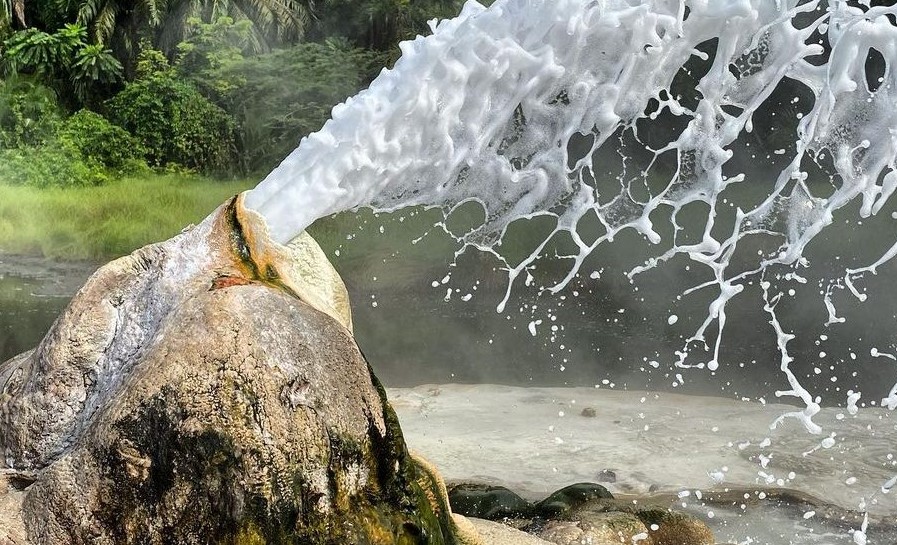Uganda, often referred to At the heart of Uganda’s natural beauty and ecological significance lies its vast network of conservation areas. These protected areas are critical for preserving the nation’s remarkable biodiversity, enhancing ecotourism, and safeguarding the environmental health of the region.
In this article, we will explore the various conservation areas in Uganda, shedding light on their ecological importance and the ongoing efforts to protect them.
Bwindi Impenetrable National Park
Bwindi Impenetrable National Park is one of Uganda’s most iconic conservation areas, located in the southwestern part of the country. The park is renowned for its dense, ancient rainforest, which is home to approximately half of the world’s remaining population of critically endangered mountain gorillas.
Visitors to Bwindi have the unique opportunity to engage in gorilla trekking, a memorable and life-changing experience that contributes to the conservation efforts of these magnificent creatures. The park also hosts various other primates, a diverse bird population, and an array of plant species.
Queen Elizabeth National Park
Spanning the districts of Kasese, Kamwenge, Rubirizi, and Rukungiri, Queen Elizabeth National Park is Uganda’s most visited protected area. This park is known for its remarkable diversity, which includes open savannahs, wetlands, and the stunning Lake Edward and Lake George.
Among its notable residents are the famous tree-climbing lions, buffalo, hippos, and a wide range of bird species. The park is also home to the Ishasha sector, where visitors can witness tree-climbing lions in their natural habitat, a rare and captivating sight.
Murchison Falls National Park
Murchison Falls National Park, located in the northwestern part of Uganda, is the largest and oldest national park in the country. The park is characterized by the mighty Nile River, which passes through it, culminating in the spectacular Murchison Falls.
This park is a haven for diverse wildlife, including elephants, giraffes, lions, leopards, and numerous species of antelope. Boat safaris along the Nile offer a unique opportunity to spot hippos, crocodiles, and an abundance of birdlife.
Kibale Forest National Park
Kibale Forest National Park is a gem for primate enthusiasts, situated in western Uganda. It boasts an incredible population of chimpanzees and is regarded as the primate capital of the world. The park’s dense forest is also home to other primates like red colobus monkeys, black and white colobus monkeys, and grey-cheeked mangabeys.
With its lush vegetation and intriguing wildlife, Kibale is a must-visit for those seeking an up-close experience with our closest relatives in the animal kingdom.
Rwenzori Mountains National Park
Uganda is not only about savannahs and forests; it is also home to the “Mountains of the Moon,” as the Rwenzori Mountains are often called. Rwenzori Mountains National Park is located in southwestern Uganda and is famous for its breathtaking alpine scenery and the snow-capped peaks of Margherita and Alexandra.
This park is home to unique Afro-alpine vegetation and a variety of rare and endemic plant and animal species. Trekkers and mountaineers from around the world are drawn to the Rwenzori to conquer some of the most challenging peaks on the continent.
Kidepo Valley National Park
Kidepo Valley National Park is a hidden gem located in the northeastern corner of Uganda. It is renowned for its stunning and untouched landscapes, with expansive savannahs and mountainous terrain. The park is home to a diverse array of wildlife, including lions, cheetahs, leopards, and elephants.
It’s also an excellent place to observe the traditional cultures of the Karamojong and Ik people, adding a unique cultural dimension to the safari experience.
Semuliki National Park
Semuliki National Park, found in western Uganda near the border with the Democratic Republic of Congo, is a biodiversity hotspot. The park is part of the Albertine Rift, one of the most biologically diverse regions in Africa. It is home to a variety of ecosystems, including lowland tropical rainforests, wetlands, and savannahs.
Semuliki is renowned for its birdwatching opportunities and the presence of several hot springs that have therapeutic properties, making it a unique destination for both nature lovers and wellness seekers.
Mgahinga Gorilla National Park
Mgahinga Gorilla National Park is located in the southwestern corner of Uganda, at the border with Rwanda and the Democratic Republic of Congo. The park’s primary attraction is its population of the rare mountain gorillas, which share the Virunga Massif with their neighbors in Rwanda and the DRC.
In addition to gorilla trekking, the park offers scenic hikes, including the chance to climb Mount Sabyinyo and explore its unique landscapes. Mgahinga is an integral part of the broader Virunga conservation area, contributing to the protection of this critically endangered species.
Conservation Challenges
Despite Uganda’s remarkable conservation efforts, these areas face a range of challenges that threaten their long-term sustainability. Some of the key challenges include:
Habitat Loss
Deforestation, agricultural expansion, and human settlement have led to habitat loss, reducing the available space for wildlife.
Poaching
Illegal hunting for bushmeat and the illegal wildlife trade remain significant threats to many species, including elephants, rhinos, and pangolins.
Climate Change
The impact of climate change, including altered rainfall patterns and increased temperatures, can disrupt ecosystems and habitats, affecting both flora and fauna.
Human-Wildlife Conflict
As human populations grow, conflicts with wildlife can escalate, leading to retaliatory killings of animals and damage to crops.
Conservation Efforts
Uganda recognizes the importance of its conservation areas and has taken proactive steps to address these challenges. Various organizations, including the Uganda Wildlife Authority (UWA) and international conservation groups, work together to protect and preserve these critical habitats. Conservation efforts include:
Anti-Poaching Initiatives
Increased patrols, better equipment, and community engagement have been implemented to combat poaching and reduce the illegal wildlife trade.
Habitat Restoration
Reforestation and habitat restoration projects are ongoing to counteract deforestation and habitat degradation.
Community Involvement
Engaging local communities in conservation efforts by providing alternative livelihoods and incentives for protecting wildlife and their habitats.
Climate Resilience
Initiatives to promote climate resilience in protected areas, including monitoring and mitigating climate change impacts on biodiversity.
Sustainable Tourism
Promoting responsible and sustainable tourism to generate revenue for conservation while minimizing negative environmental impacts.
Conclusion
Uganda’s conservation areas are not only a source of natural beauty and biodiversity but also a testament to the country’s commitment to preserving its ecological treasures. The ongoing efforts to protect these areas not only safeguard the diverse wildlife and ecosystems but also contribute to the nation’s economy through sustainable tourism.
As we move forward, the continued support of local communities, government agencies, and international organizations is crucial to ensure that Uganda’s conservation areas remain a beacon of hope for biodiversity preservation and sustainable development in the heart of Africa.



Comment (0)